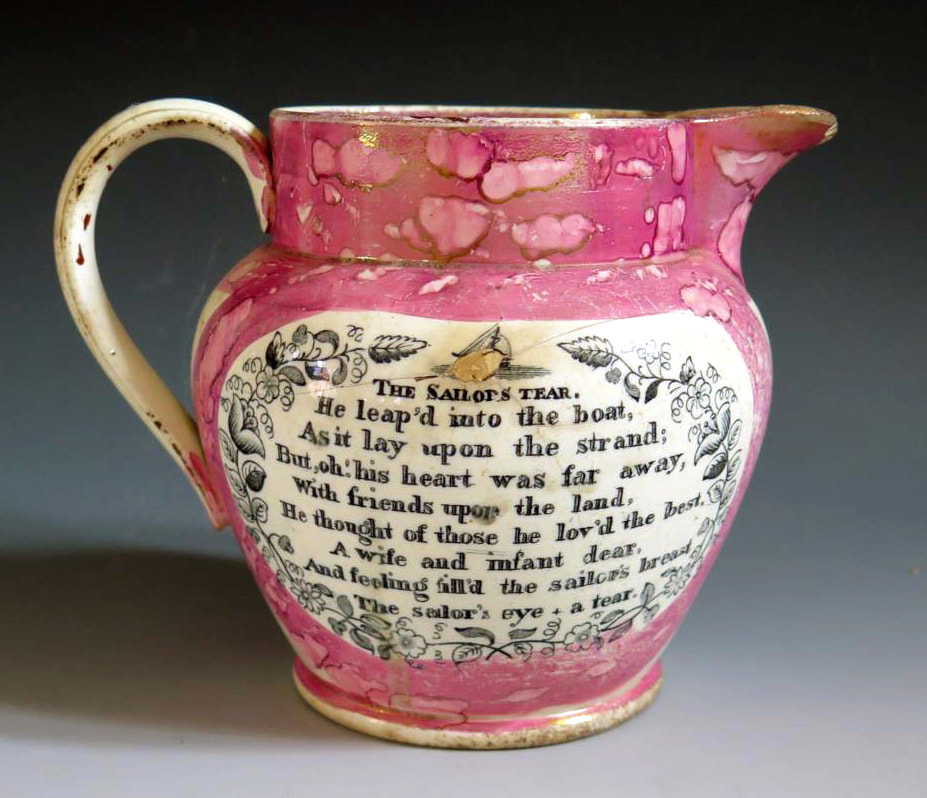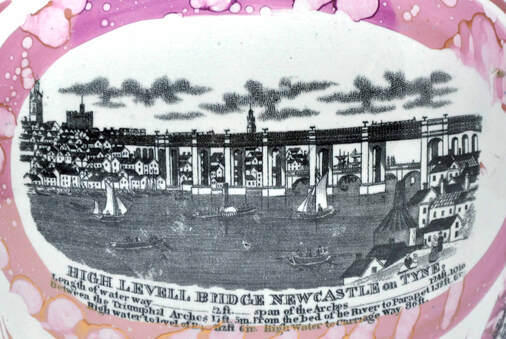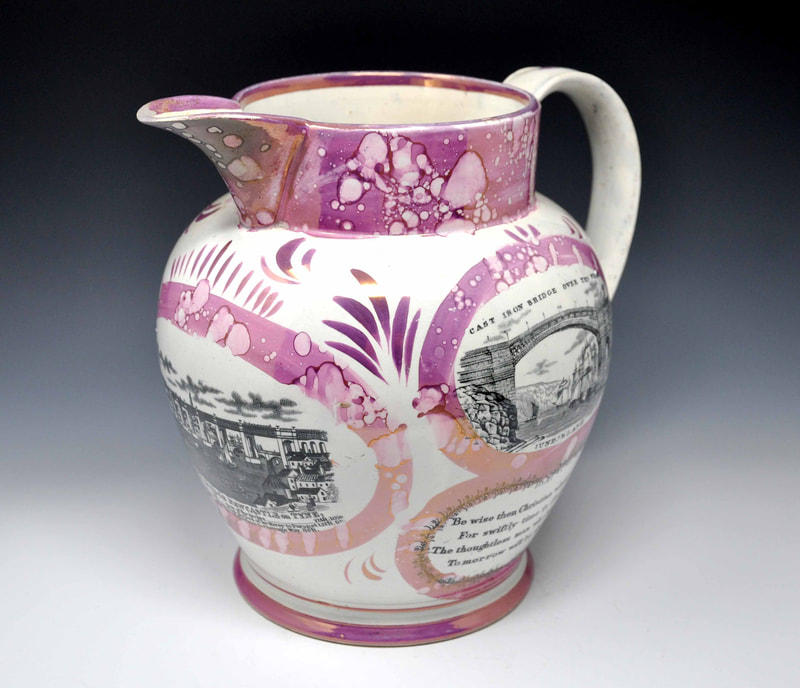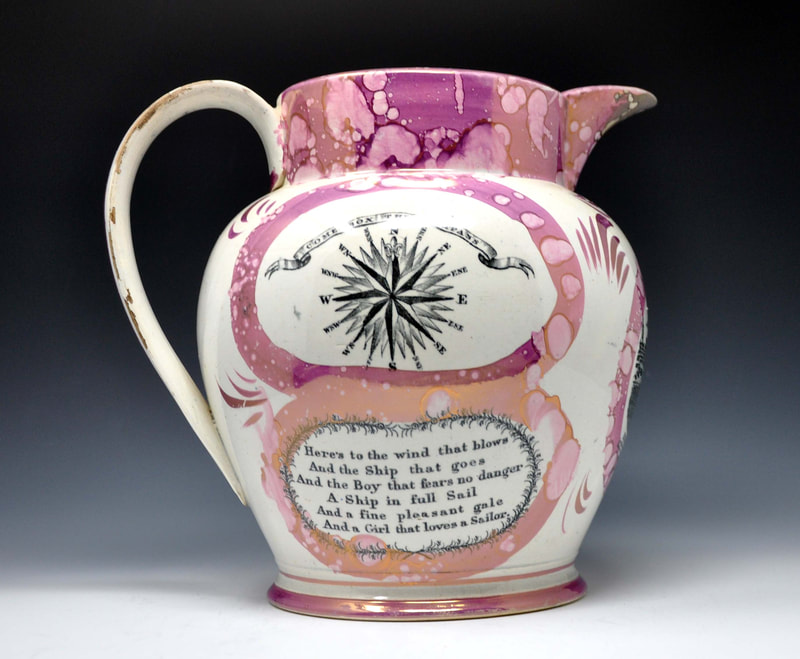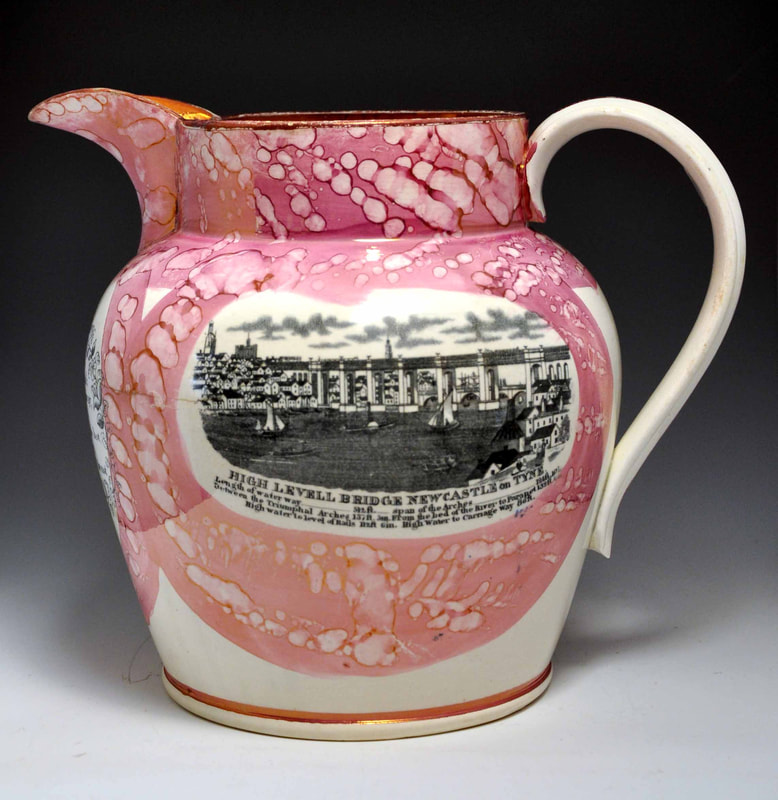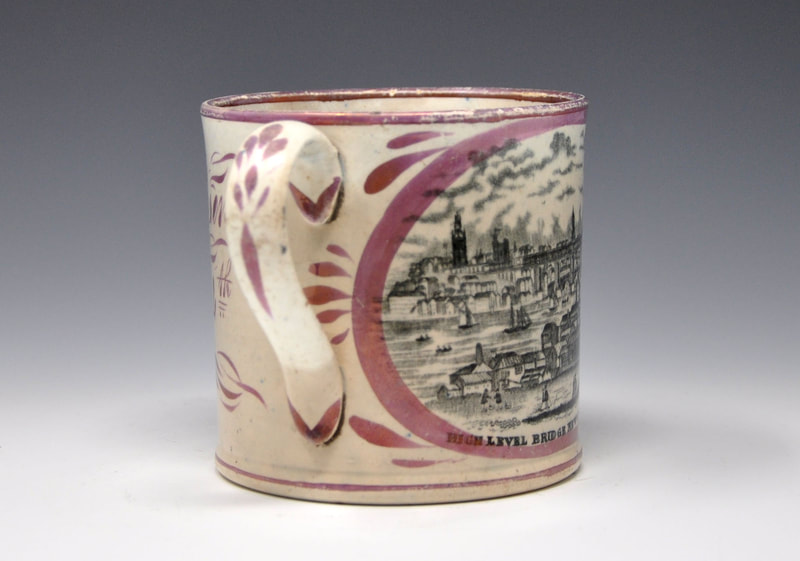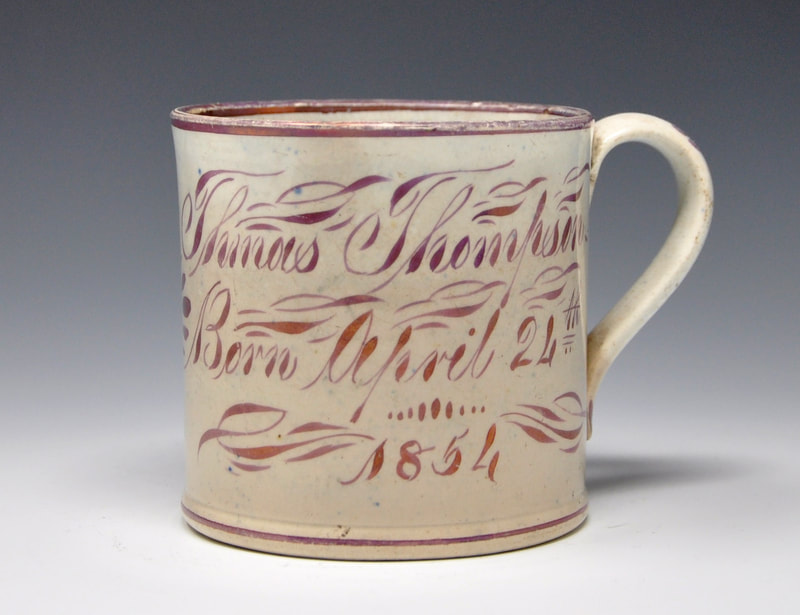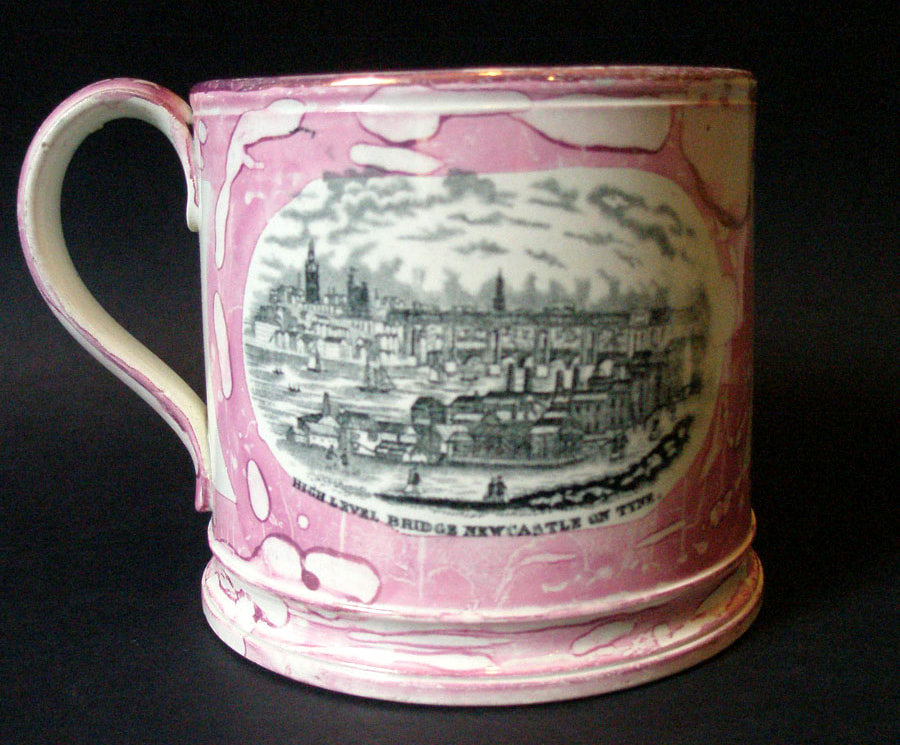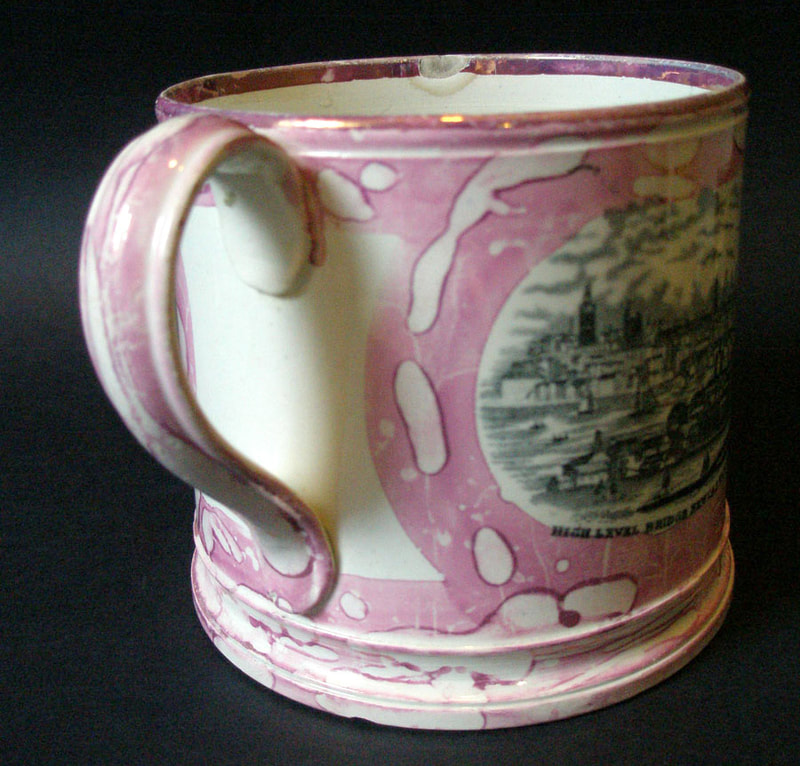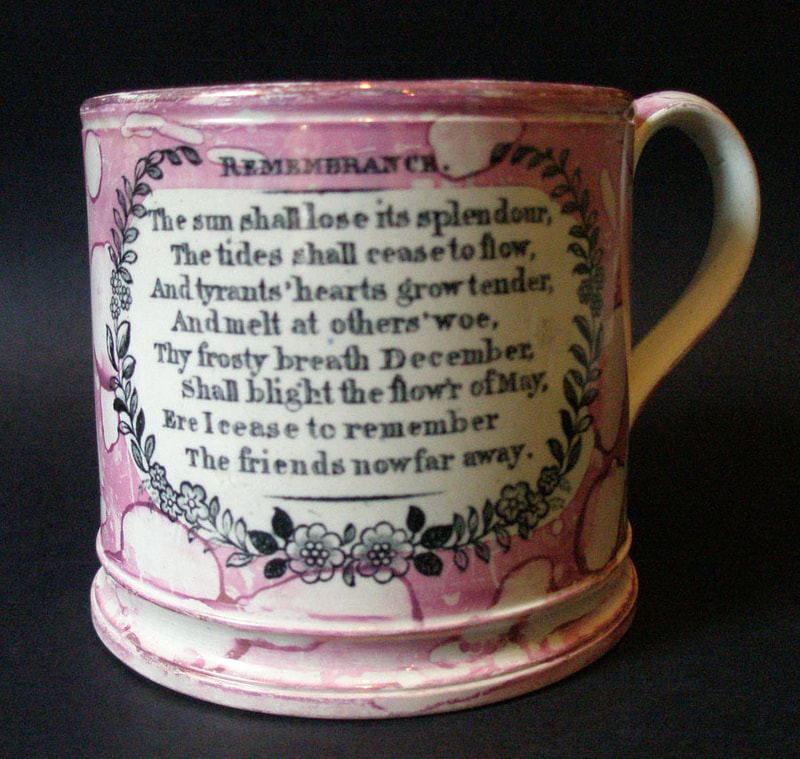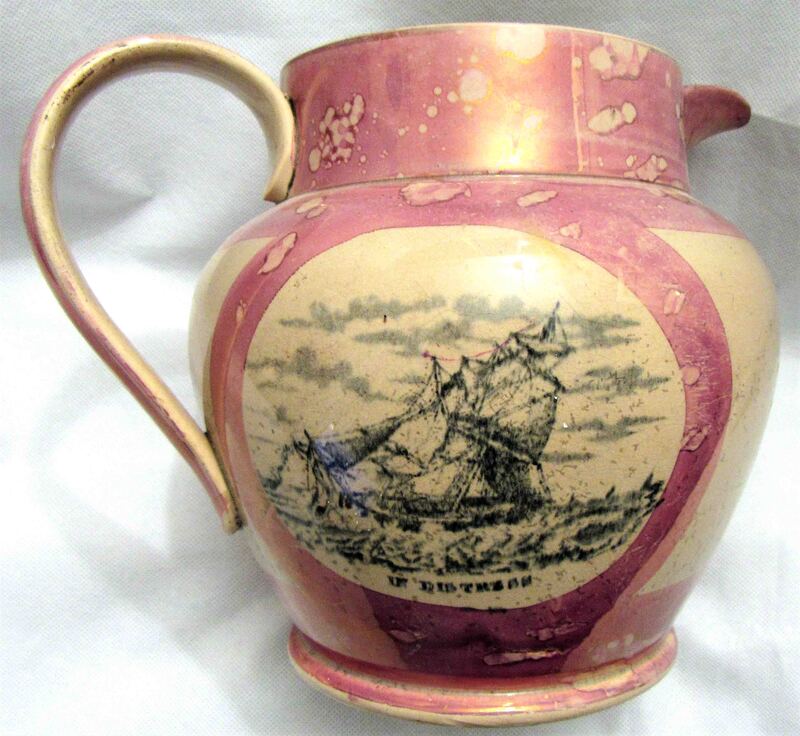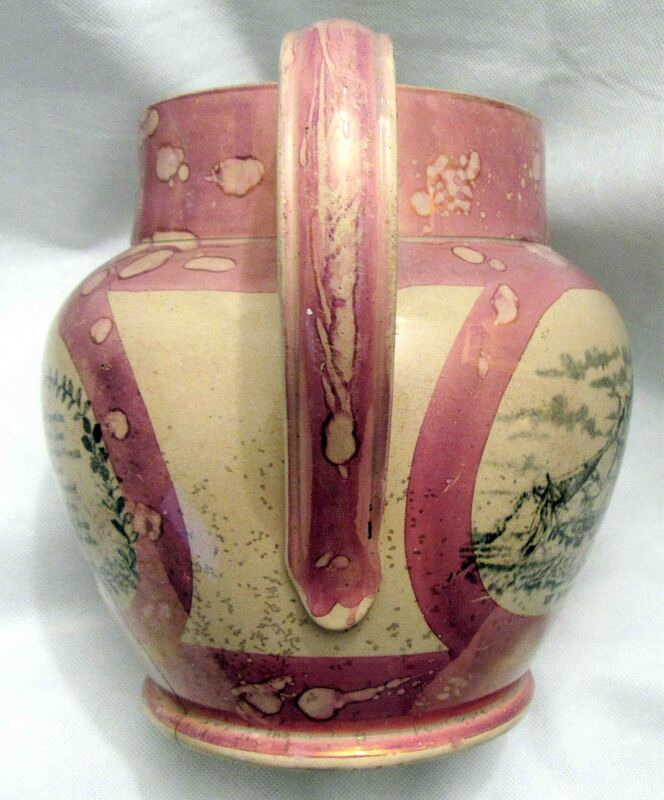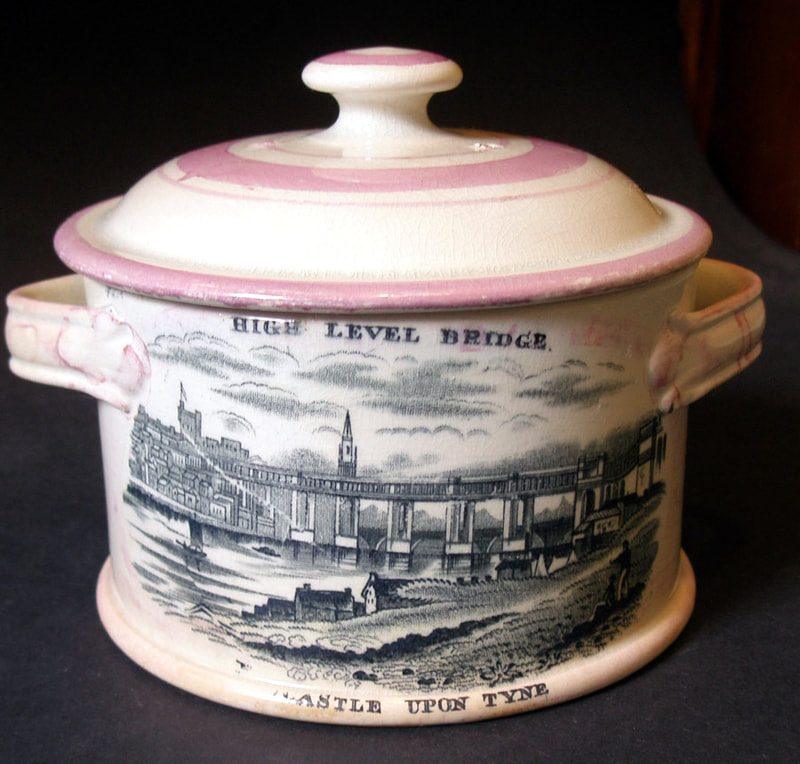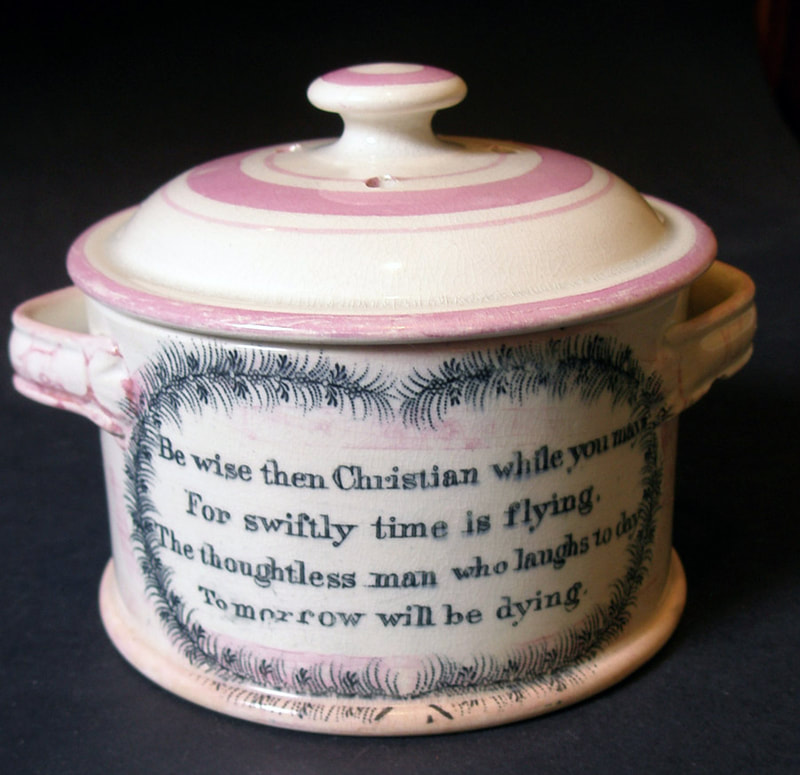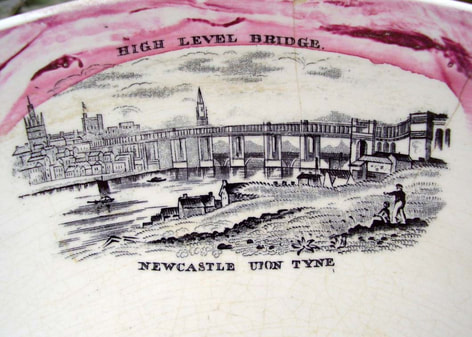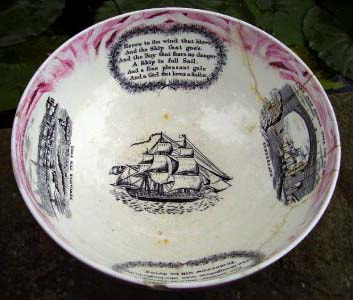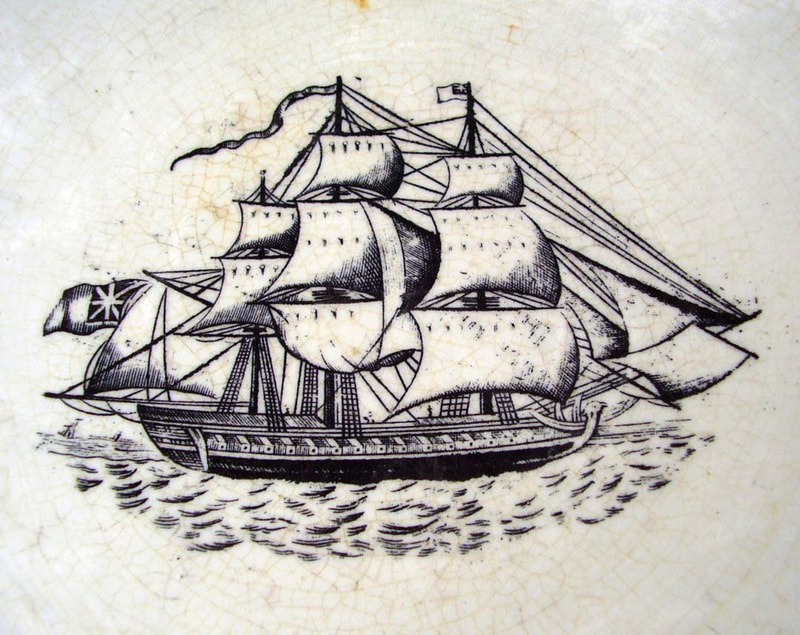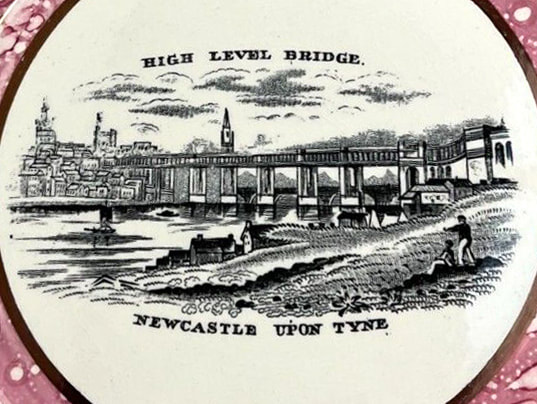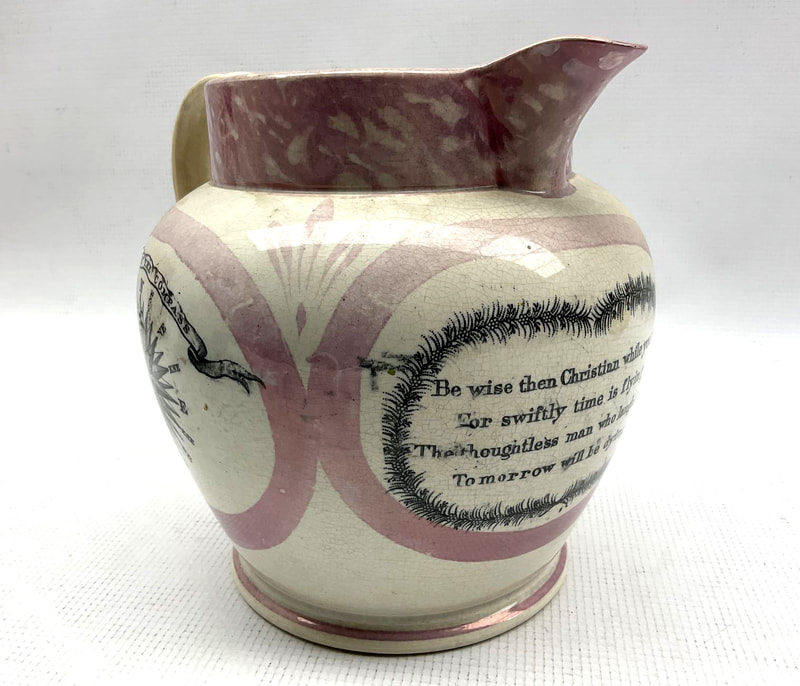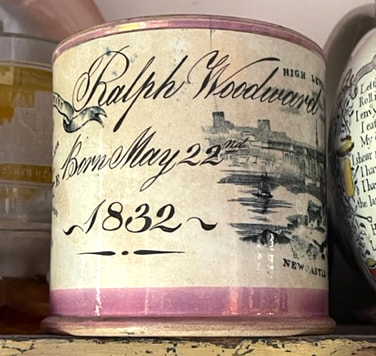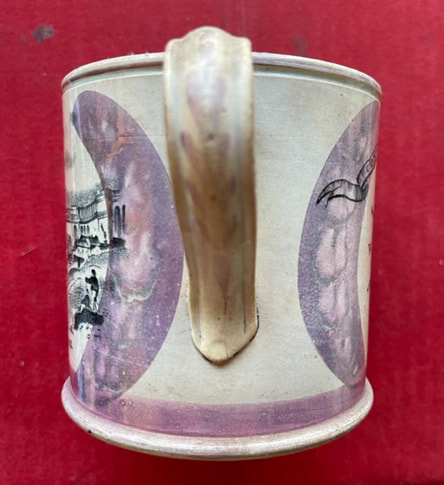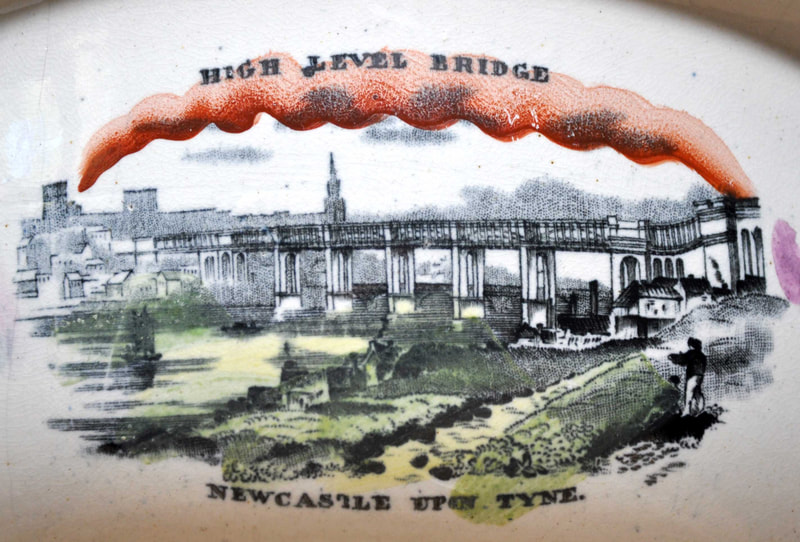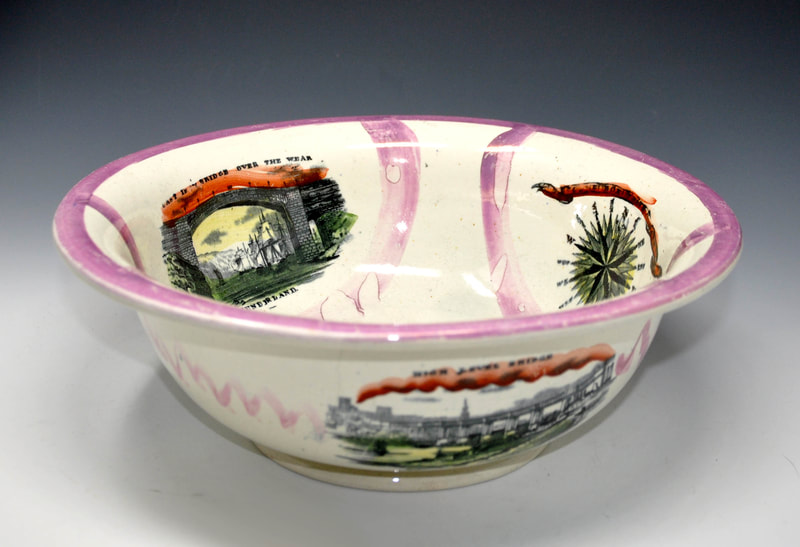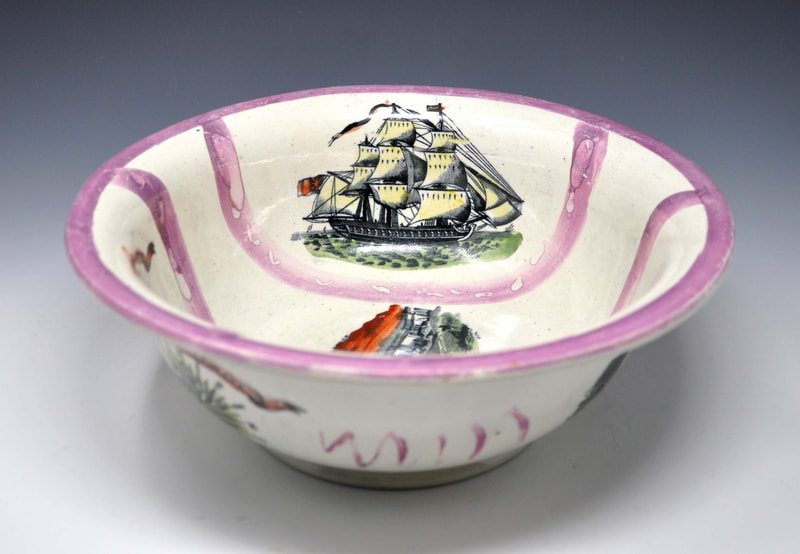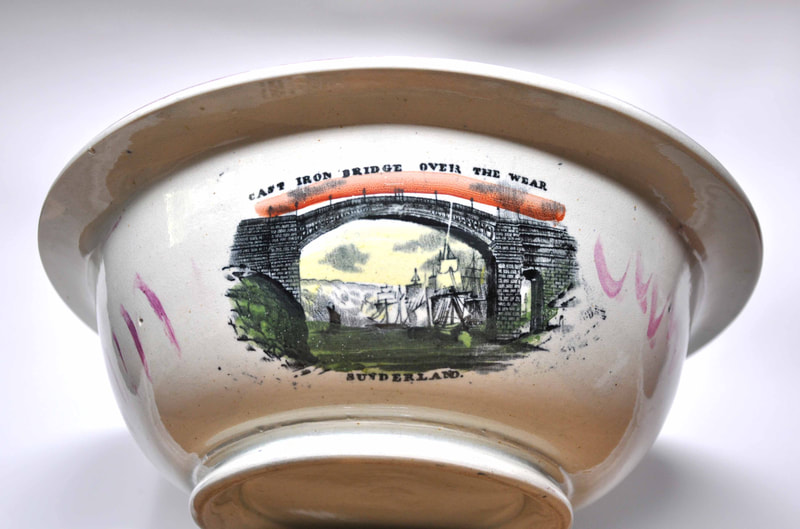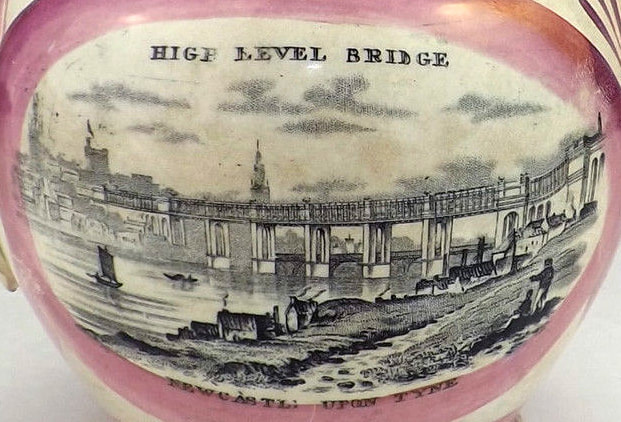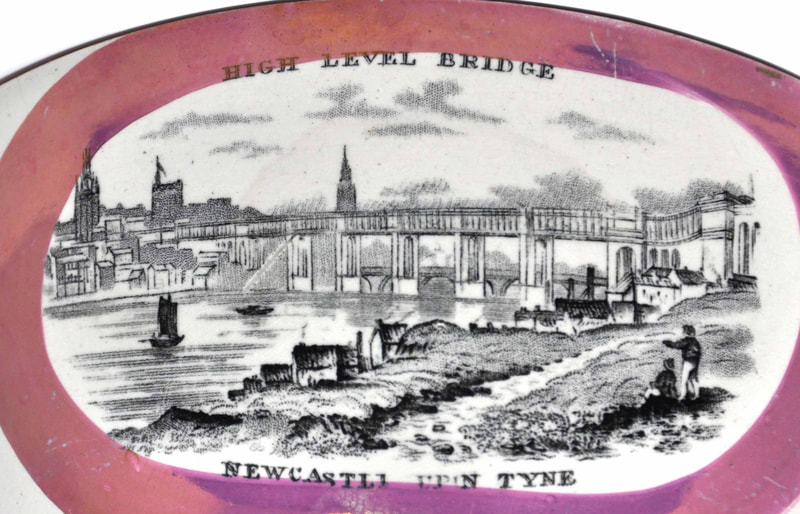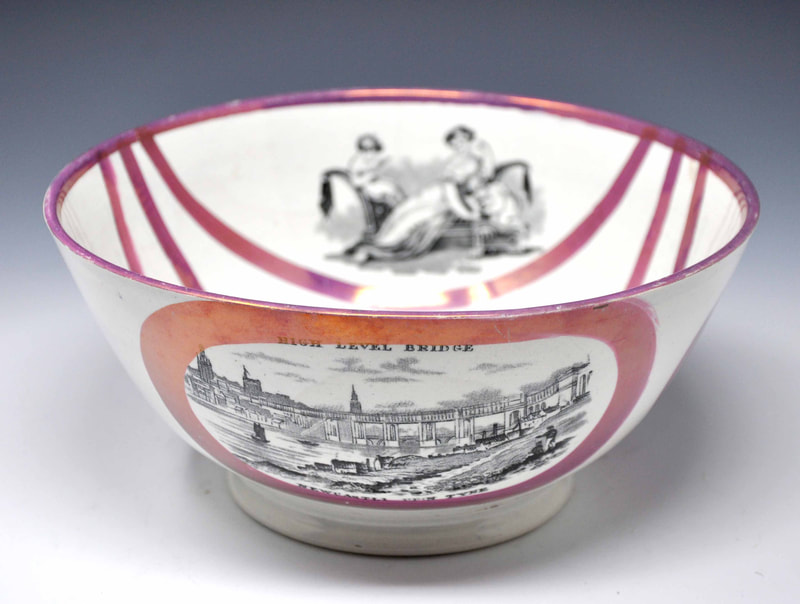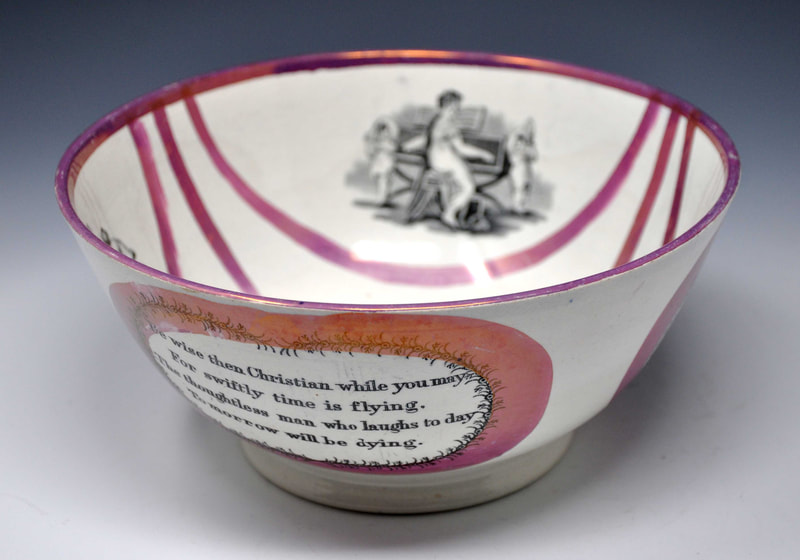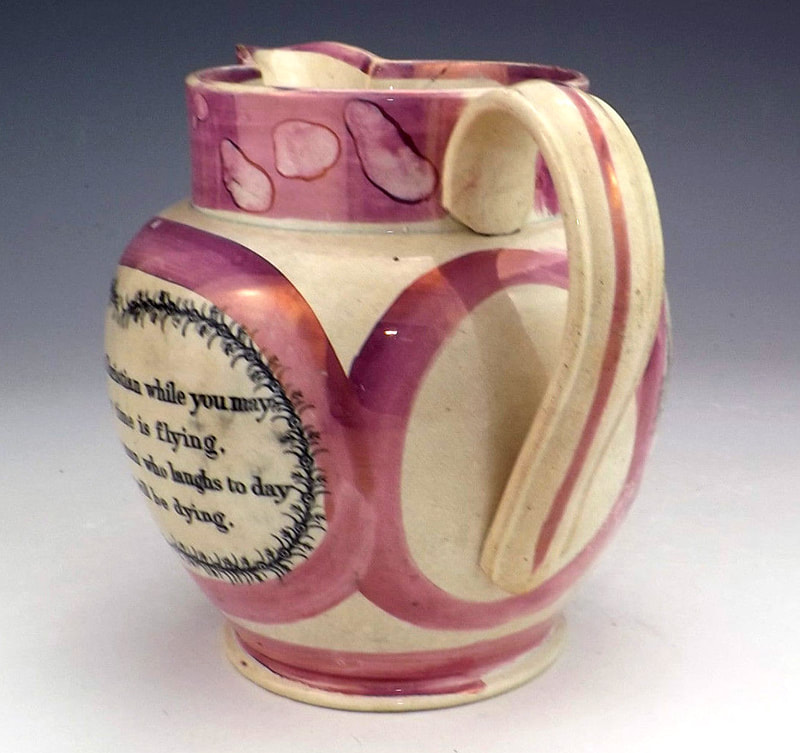High Level Bridge Newcastle Upon Tyne
The High Level Bridge in Newcastle was a rail bridge and opened in 1849.
Attributed to John Carr's Low Lights Pottery, North Shields
This version of the transfer is easily identifiable by the curvy cloud formations. This plaque form was know to have been used by several Tyne potteries, including Fell, Maling and Carr. However, brown/sepia transfers (as opposed to black) are known to have been John Carr c1850, and that is my best guess for an attribution at this stage. The jug below has a more typical black transfer, and the lustre decoration is again consistent with Carr.
Attributed to Thomas Fell, St Peter's Pottery, Newcastle
A large high-waisted jug attributed to Fell on the basis of its lustre decoration.
A similar jug with the transfer and other variations of maritime transfers attributed to Fell.
The jug below, with a distinctive broad foot, has decorative features associated with Thomas Fell.
This jug, in the Sunderland Museum & Winter Gardens, Tyne & Wear Archives & Museums collection is in their catalogue tentatively attributed to Maling. It combines the Newcastle High Level Bridge transfer with a view of the Sunderland Bridge (bridge 29).
The plaque below has another feature peculiar to Fell. The holes for hanging are pierced through the central portion, rather than through the pink-lustre border.
Attributed to CT Maling, Ouseburn Bridge Pottery, Newcastle
The bowl below is unmarked.
This transfer is attributed to Maling on the basis of the bowl below in the Sunderland Museum & Winter Gardens, Tyne & Wear Archives & Museums collection. The catalogue says it has a triangular impressed mark with the initials CTM.
This transfer on the small Christening mug below, with an inscription for 1854.
The same transfer on two larger, heavily lustred mugs.
Below is a jug whose current condition matches the title under the ship.
Attributed to CT Maling, Ouseburn Bridge Pottery, Newcastle
Note the clouds to the right of the bridge. They are stronger on this imprint and closer in appearance to the later (reproduction) mug below.
The clouds to the right of the bridge are missing in part. I've assumed that this is a vagary of the rubbing of the transfer, perhaps a crease in the tissue, over a curved surface, but it could be from a different transfer plate. Or perhaps an earlier imprint from the same plate, and the clouds were engraved at a later date.
Below is a late 20th century reproduction mug, taken from Maling's original transfer plate. It is acknowledged as a reproduction in the Sunderland Museum & Winter Gardens, Tyne & Wear Archives & Museums collection catalogue. Although I believe the item was made by Maling in Newcastle, rather than Staffordshire, as I've seen similar wares with Maling printed marks.
Below, an unmarked plate also attributed as 20th century Maling, although the quality of the lustre perhaps suggests an earlier date, c1930. Note the black speck above the letter 'P' in 'UPON' which appears on all these later items.
Unidentified Tyne pottery
This view, from an as-yet unidentified Tyne pottery, is similar to the CT Maling version above. However, the clouds are different.
Attributed to John Patton, Phoenix Pottery, Newcastle
This version is very similar to the view above. It is attributed to John Patton based on the similarity of inscription to items from the Phoenix Pottery, and was perhaps made as a 21st birthday present in 1853.
This looks to come from the same transfer plate as the mug above. Note that the tower on the left (Newcastle Cathedral) has a flat roof with no spire in this version. The bowl is unmarked.
Attributed to either CT Maling, Ouseburn Bridge Pottery, or
Thomas Fell, St Peter's Pottery, Newcastle
A very similar view to the unattributed jug above. However, there is smoke coming from the chimneys of the buildings in the foreground. Unusually, the Sunderland and Newcastle bridge transfers are married with Adam Buck-type engravings from an older copper plate (c1820). See RC Bell (p15) for a copper plate with these designs 'belonging to Robert Maling'. However, this version of the the Sunderland Bridge transfer (bottom left below) appears on the large Fell-attributed jug above. So at present I'm torn over this attribution.
Below, the left transfer shown above, on a jug.

